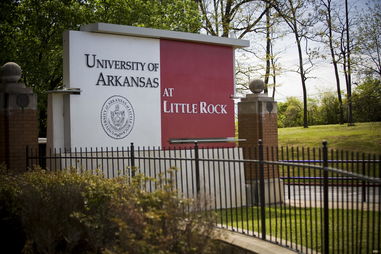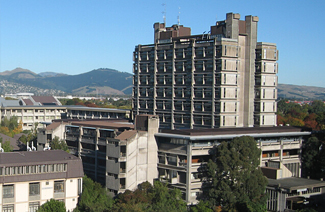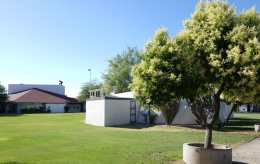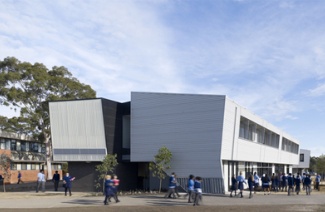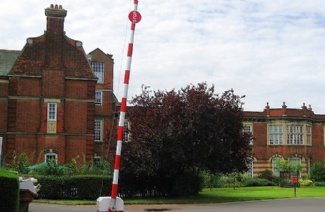在雅思考试中,雅思阅读部分一共考察三篇阅读文章,考生要在有限的时间内答完40道题目。为了便于大家更好的进行备考,2017年5月25日雅思阅读预测【大范围】!
点击》》
点击》》
Tick Tock Body clock、SSDP Project、Newly Hatched birds 、Alcohol fuel in England 、Living with uncertainty 、The power of music、Expert in musician 、Butterfly farms in UK、Fluoridation in the water、Tidal Power
为了便于大家更好的进行备考,网为大家带来了Tidal Power阅读文章及答案解析,一起来具体的了解一下:
Tidal Power
Undersea turbines which produce electricity from the tides are set to become an important source of renewable energy for Britain. It is still too early to predict the extent of the impact they may have, but all the signs are that they will play a significant role in the future
A. Operating on the same principle as wind turbines, the power in sea turbines comes from tidal currents which turn blades similar to ships’ propellers, but, unlike wind, the tides are predictable and the power input is constant. The technology raises the prospect of Britain becoming self-sufficient in renewable energy and drastically reducing its carbon dioxide emissions. If tide, wind and wave power are all developed, Britain would be able to close gas, coal and nuclear power plants and export renewable power to other parts of Europe. Unlike wind power, which Britain originally developed and then abandoned for 20 years allowing the Dutch to make it a major industry, undersea turbines could become a big export earner to island nations such as Japan and New Zealand.
B. Tidal sites have already been identified that will produce one sixth or more of the UK’s power — and at prices competitive with modern gas turbines and undercutting those of the already ailing nuclear industry. One site alone, the Pentland Firth, between Orkney and mainland Scotland, could produce 10% of the country’s electricity with banks of turbines under the sea, and another at Alderney in the Channel Islands three times the 1,200 megawatts of Britain’s largest and newest nuclear plant, Sizewell B, in Suffolk. Other sites identified include the Bristol Channel and the west coast of Scotland, particularly the channel between Campbeltown and Northern Ireland.
C. Work on designs for the new turbine blades and sites are well advanced at the University of Southampton’s sustainable energy research group. The first station is expected to be installed off Lynmouth in Devon shortly to test the technology in a venture jointly funded by the department of Trade and Industry and the European Union. AbuBakr Bahaj, in charge of the Southampton research, said: ‘The prospects for energy from tidal currents are far better than from wind because the flows of water are predictable and constant. The technology for dealing with the hostile saline environment under the sea has been developed in the North Sea oil industry and much is already known about turbine blade design, because of wind power and ship propellers. There are a few technical difficulties, but I believe in the next five to ten years we will be installing commercial marine turbine farms.’ Southampton has been awarded £215,000 over three years to develop the turbines and is working with Marine Current Turbines, a subsidiary of IT power, on the Lynmouth project. EU research has now identified 106 potential sites for tidal power, 80% round the coasts of Britain. The best sites are between islands or around heavily indented coasts where there are strong tidal currents.
D. A marine turbine blade needs to be only one third of the size of wind generator to produce three times as much power. The blades will be about 20 metres in diameter, so around 30 metres of water is required. Unlike wind power, there are unlikely to be environmental objections. Fish and other creatures are thought unlikely to be at risk from the relatively slow-turning blades. Each turbine will be mounted on a tower which will connect to the national power supply grid via underwater cables. The towers will stick out of the water and be lit, to warn shipping, and also be designed to be lifted out of the water for maintenance and to clean seaweed from the blades.
E. Dr Bahaj has done most work on the Alderney site, where there are powerful currents. The single undersea turbine farm would produce far more power than needed for the Channel Islands and most would be fed into the French Grid and be re-imported into Britain via the cable under the Channel.
F. One technical difficulty is cavitation, where low pressure behind a turning blade causes air bubbles. These can cause vibration and damage the blades of the turbines. Dr Bahaj said: ‘We have to test a number of blade types to avoid this happening or at least make sure it does not damage the turbines or reduce performance. Another slight concern is submerged debris floating into the blades. So far we do not know how much of a problem it might be. We will have to make the turbines robust because the sea is a hostile environment, but all the signs that we can do it are good.’
Questions 14-17
Reading Passage 2 has six paragraphs, A-F.
Which paragraph contains the following information?
Write the correct letter, A-F, in boxes 14-17 on your answer sheet.
NB You may use any letter more than once.
14 the location of the first test site
15 a way of bringing the power produced on one site back into Britain
16 a reference to a previous attempt by Britain to find an alternative source of energy
17 mention of the possibility of applying technology from another industry
Questions 18-22
Choose FIVE letters, A-J.
Write the correct letters in boxes 18-22 on your answer sheet.
Which FIVE of the following claims about tidal power are made by the writer?
A It is a more reliable source of energy than wind power.
B It would replace all other forms of energy in Britain.
C Its introduction has come as a result of public pressure.
D It would cut down on air pollution.
E It could contribute to the closure of many existing power stations in Britain.
F It could be a means of increasing national income.
G It could face a lot of resistance from other fuel industries.
H It could be sold more cheaply than any other type of fuel.
I It could compensate for the shortage of inland sites for energy production.
J It is best produced in the vicinity of coastlines with particular features.
以下是该篇阅读题目的答案解析:
Question 14
答案: C
关键词: first test site
定位原文: C段第2句“The first station is…”第一个潮汐发电站预计很快将在德文郡的林茅斯海岸建立,用来检测贸易与工业部和欧盟的一个合资项目研发的技术。
解题思路: 题干中的first test两个词都直接对应这句话中的first...test; 而题干中的site对应原文的 Lynmouth in Devon, 表示测试站的地点。
点击》》
点击》》
Question 15
答案: E
关键词: back into Britain
定位原文: E段第2句“The single undersea turbine farm…”
解题思路: 仅仅这一个水下涡轮机群的发电量就远比海峡群岛所需要的电量还要多,其中大部分电量将运输到法国电网,然后通过水下电缆重新进入英国。 题干中的back into Britain对应原文中的...be re-imported into Britain via the…
| 2017年5月25日 | |
Question 16
答案: A
关键词: previous, alternative source of energy
定位原文: A段最后一句“Unlike wind power which Britain…” 与之前开发风能有所不同,风能由英国首先开发,而后却搁置了20年,最后由荷兰将其发展成一个主要产业,这次通过向日本与新西兰这样的岛国出口水下涡轮机,英国将赚取巨额外汇。
解题思路: 题干中的previous对应这句话中的Unlike...0riginany, 为了突出这次潮汐发电的前景,这句话提到了之前英国对风能进行尝试开发,但却半途而废,被荷兰发展壮大。
Question 17
答案: C
关键词: technology, another industry
定位原文: C段第4句“The technology for dealing with…” 应对海底恶劣盐渍环境的技术已经在北海油田工业中得以研发,而且人们对涡轮机叶片的设计已经有了很多了解。
解题思路:题目中的another industry对应这句话中的the North Sea oil industry,属于同义表达。
Question 18-Question 22
答案: A, D, E, F,J (in any order)
关键词: claims about tidal power are made by the writer
定位原文: 指定多选,参见解题思路
解题思路: 选项A(A段第1句)题干中more reliable source of energy(更可靠的能源)对应这句话中的...are predictable and the power input is constant, 表明潮汐能源具备风能所没有的两个优点:可预测的,恒定的;选项B,过于绝对,不选;选项C,文中完全未提及;选项D(A段第2句)二氧化碳的排放量下降了,自然也减少了空气污染;选项E(A段第3句)题干中的 contribute to the closure of many existing power stations对应文中 的…dose gas, coal and nuclear power plants…;选项F(A段最后一句),题干中的 national income 对应原文中的 earner (意为 a business or activity which makes a profit);选项G、H、I,文中完全未提及;选项J(C段倒数第二句)题干中best produced in the vicinity of coastlines对应这句话中的The best sites are between...。
以上是网为大家分享的2017年5月25日雅思阅读预测【大范围】,大家可以在备考的过程中对以上雅思阅读题目进行练习。
